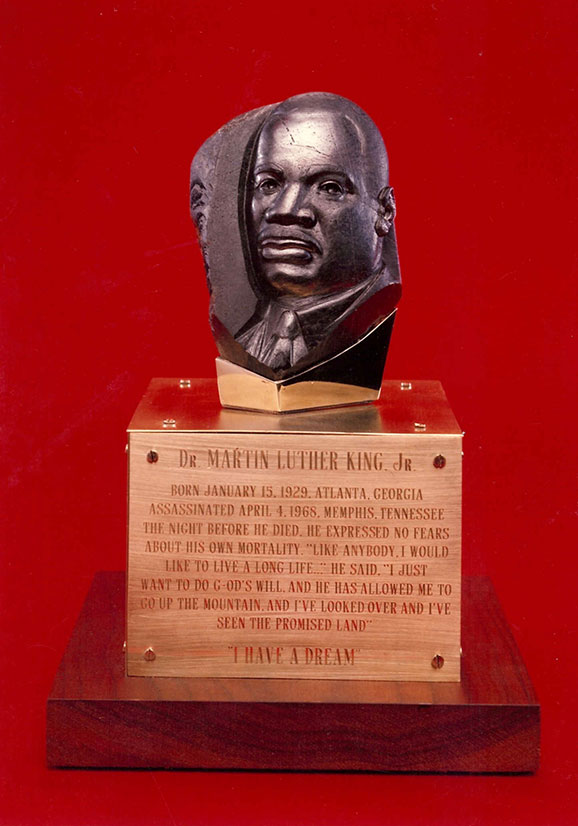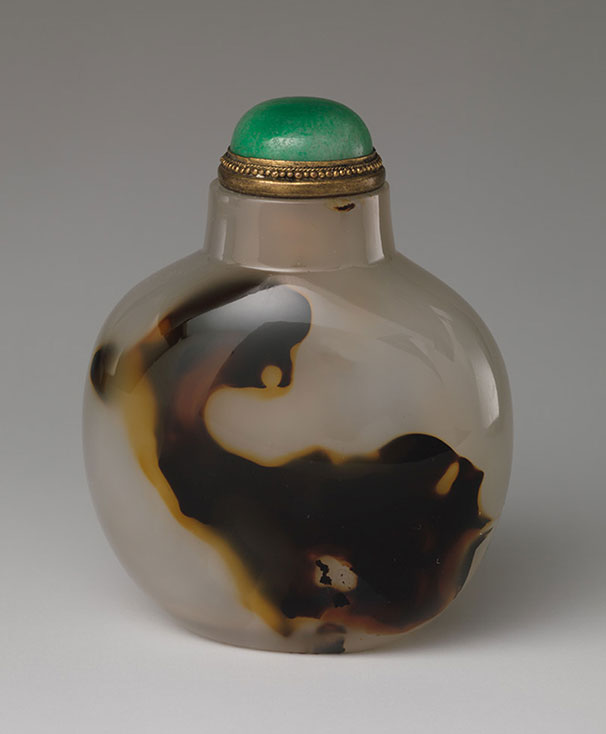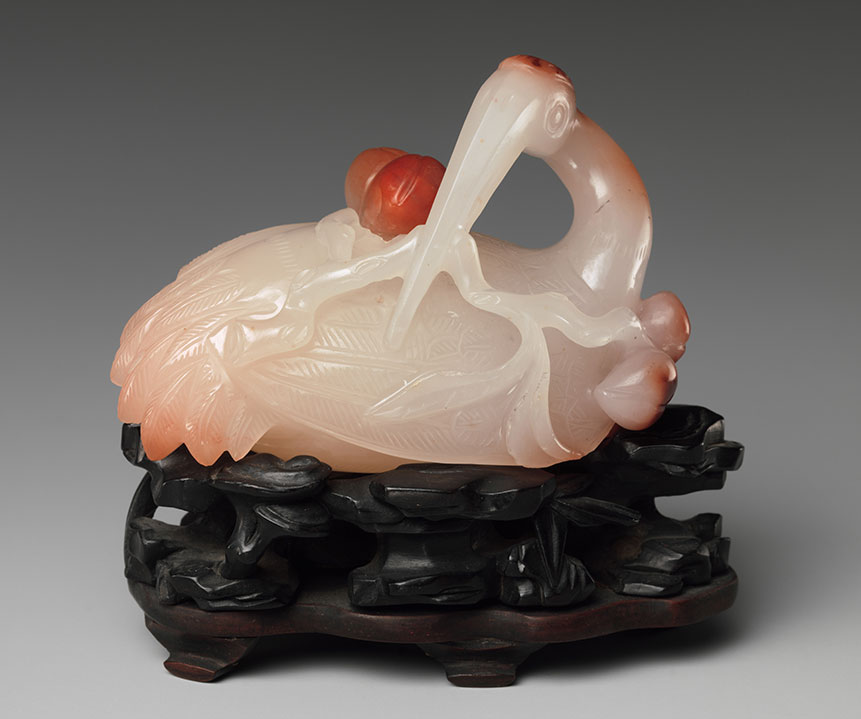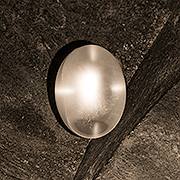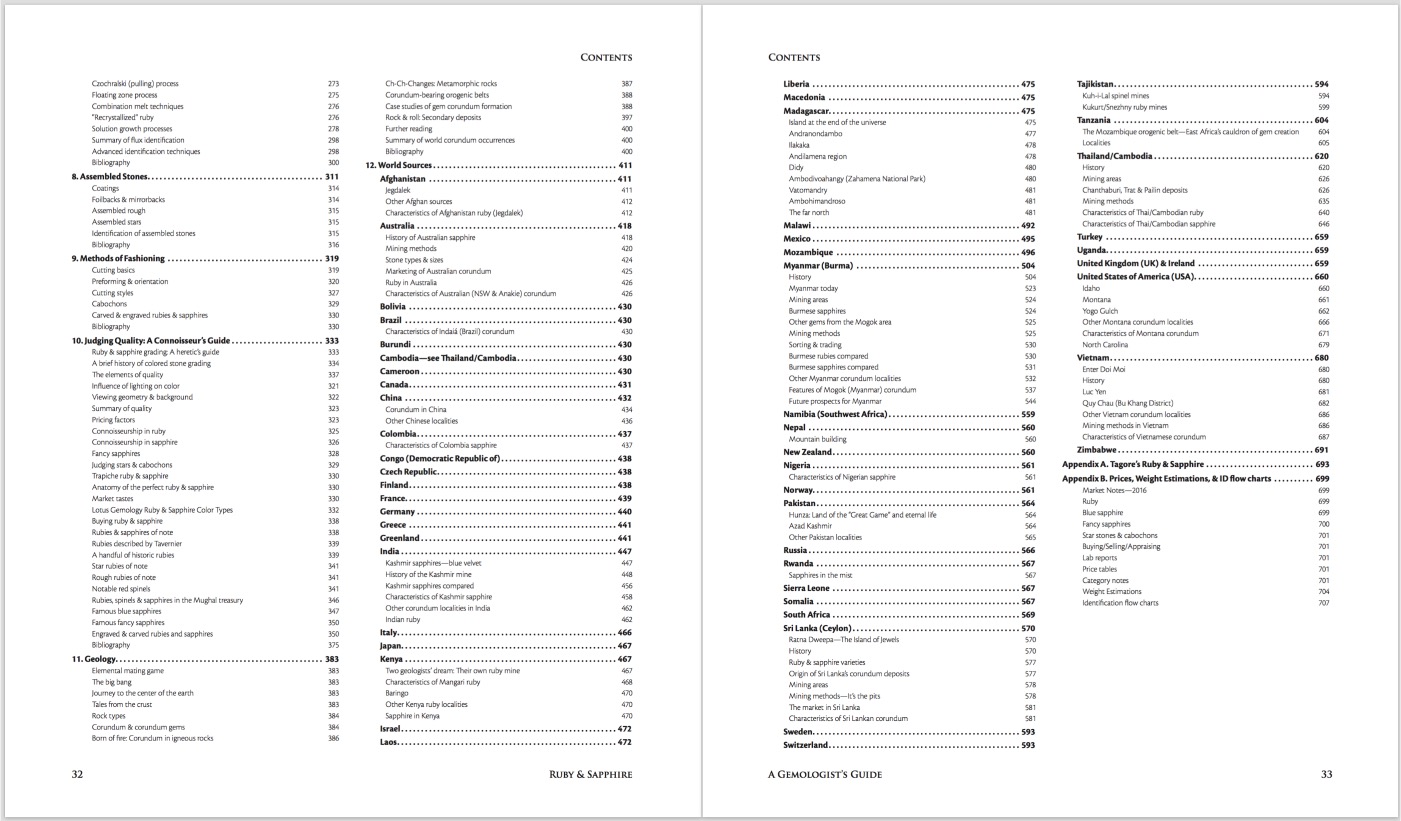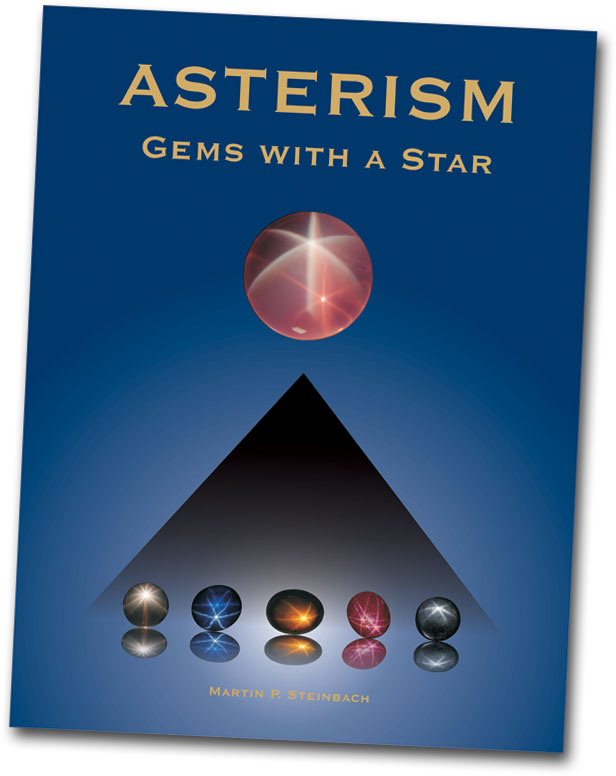January 2017
January 2017
And still we dream. A carving of Dr. Martin Luther King Jr. taken from the Famous Star Stones section of Martin P. Steinbach's Asterism: Gems with a Star, reviewed below by Mia Dixon. Dr. King was born eighty-eight years ago Sunday. Next year will be the fiftieth anniversary of his assassination. (Photo courtesy of the Kazanjian Foundation)
Table of Contents
Shows and Events
- Tucson Time: Jan. 31 – Feb. 12, 2017
- Beyond Bling
LACMA, through February 5, 2017 - Colors of the Universe: Chinese Hardstone Carvings
The Met Fifth Avenue, now through October 9, 2017 - Past Is Present: Revival Jewelry
MFA Boston, Feb. 14, 2017 – Aug. 19, 2018 - Images inFormation: Collections Online
Pala International News
Industry News
Books
- Ruby & Sapphire: A Gemologist's Guide
by Richard W. Hughes, Wimon Manorotkul and E. Billie Hughes - Asterism: Gems with a Star
by Martin P. Steinbach
David Hughes, Editor
Shows and Events
Tucson Time: Jan. 31 – Feb. 12, 2017
Later this month we're looking forward to the world's greatest gem and mineral show. One-stop general information about individual shows, shuttle routes, and more can be obtained from the Tucson EZ-Guide.
Pala International will be represented in Tucson as follows. We look forward to seeing our many friends there. Visit the Pala International Show Schedule for future events.
AGTA GemFair Tucson
January 31 – February 5, 2017
Tucson Convention Center
Pala International Booth: 1016
Website
Pala joins nearly 100 exhibitors for this trade-only annual extravaganza.
The event website features an interactive floorplan allowing you to see who is exhibiting by area of the convention center.
Free seminars by notables in the world of gemstones and pearls are listed. Also listed are several special events and exhibits.
Read about the AGTA GemFair app here.
The American Gem Trade Association (AGTA) is an association of United States and Canadian trade professionals dedicated to promoting the long term stability and integrity of the natural colored gemstone and Cultured Pearl industries. The Association pursues its goals through the combined use of educational programs, publicity, industry events, government and industry relations, and printed materials for both the trade and consumer.
16th Annual Westward Look Mineral Show
February 3–6, 2017
Westward Look Resort
Pala International:
Suite 224, Building 20, Upper Level
Website (newly redesigned)
Pala International and three dozen other world-class mineral dealers shack up at the Sonoran Desert resort.
See Pala International's page on the Westward Look Show site. See also this dealer list.
The annual Saturday Collector Day this time will be devoted to the collection of the Rice Northwest Museum of Rocks and Minerals. (See the December 2014 writeup on the museum in our sibling newsletter, Pala Mineralis.) The annual Sunday Evening Program is yet to be announced.
Christophe Gobin shares some of his great mineral specimens at last year's Westward Look Show.
63rd Annual Tucson Gem & Mineral Show
February 9–12, 2017
Tucson Convention Center
Pala International:
Booths 828–929A
Website
TGMS is the largest gem and mineral show in the country. This year's theme is "Mineral Treasures of the Midwest."
Lectures are held each day of the Show in the Crystal Ballroom and Turquoise Ballroom at the SMG-Tucson Convention Center.
The Arthur Roe Memorial Micromount Symposium is held on Friday, February 10, also in the Turquoise Ballroom.
The show's Saturday Night Program will include a silent auction benefitting Mindat.org and the Geo-literary Society, remarks by the TGMS President and Show Chair, an awards presentation, buffet dinner and live auction.
For everyone who came to the 2016 Tucson Gem and Mineral Show® and would like to revisit some of the spectacular exhibits, and for those of you who weren't lucky enough to attend: For your viewing pleasure, the Tucson Gem and Mineral Society and BlueCap Productions present this video, comprised of six of our "Spotlight Cases" that were in the 2016 Tucson Gem and Mineral Show®, "Shades of Blue – Minerals of the World."
Beyond Bling
LACMA, through February 5, 2017
Bernhard Schobinger (b. 1946, Switzerland), Smoky Quartz on Countersink Nail ring, 2010, Los Angeles County Museum of Art. Gift of Lois and Bob Boardman (M.2013.221.31), © Bernhard Schobinger / Artists Rights Society (ARS), New York / ProLitteris, Zürich. (Photo © Museum Associates / LACMA)
Given our last month's stories that touched on unconventional jewelry-making (Hilde de Decker and Augusten Burroughs), we were immediately (albeit belatedly) struck by the signature image at right for a soon-to-close exhibition at the Los Angeles County Museum of Art, Beyond Bling: Jewelry from the Lois Boardman Collection.
Lois Boardman didn't set out to be a collector; it happened by chance. Paired with Philadelphia gallery owner Helen Drutt for training on an NEA-funded project in 1980 at the former campus of Black Mountain College (the cutting-edge institution with alumni artists like Cy Twombly, Ruth Asawa, and Robert Rauschenberg, not to mention its venerable faculty) the two were tasked with touring America in search of craftspeople. Drutt wore jewelry and sold it, too. With Drutt as her teacher and supplier, Boardman began amassing a collection that was curated, she told art historian Toni Greenbaum, "in part, by my pocketbook."
The news release for Beyond Bling states that the 300-piece collection, gifted to LACMA, "has immediately vaulted LACMA's contemporary jewelry holdings to the top ranks in the country." Over fifty pieces from the collection are juxtaposed with items from the museum's own vaults. The exhibition structure takes its inspiration from Kunstkammern, or the cabinets of curiosity that we've discussed in our sibling newsletter Pala Mineralis. Thus the displays are grouped by their early scientific categories of "animal," "vegetable" and "mineral"—with the added contemporary class of "plastic."
Animal. Bruno Martinazzi, Goldfinger bracelet, designed 1969, made 1970. Number 4 of 12 left-hand Goldfinger bracelets, Los Angeles County Museum of Art. Gift of Lois and Bob Boardman (M.2015.252.58). © Bruno Martinazzi. (Photo © Museum Associates / LACMA)
Vegetable. This brooch, crafted in powder-coated stainless steel, is reminiscent of a venus flytrap. Mirjam Hiller, Loperenias brooch, 2012, Los Angeles County Museum of Art. Gift of Lois and Bob Boardman (M.2013.221.14). © Mirjam Hiller. (Photo © Museum Associates / LACMA)
Mineral. This ring looks like it could have been created for a Marilyn Minter project (well, she and Karl Fritsch are both associated with the gallery Salon 94). Karl Fritsch, Ring, 2005, Los Angeles County Museum of Art. Gift of Lois and Bob Boardman (M.2013.221.12). © Karl Fritsch. (Photo © Museum Associates / LACMA)
Plastic. Its materials may be 21st-century—i.e., Lego—but its inspiration is a throwback to Boucheron's diamond and emerald necklace created in 1928 for the Maharajah of Patiala. emiko oye (b. 1974, United State, active California), Maharajah’s 6th necklace, 2008. From the series My First Royal Jewels, 2007–09 (explained here), Los Angeles County Museum of Art. Gift of Lois and Bob Boardman (M.2016.21.2). © emiko oye. (Photo © Museum Associates / LACMA)
Can't see the show? The collection—all 300+ pieces—is cataloged in this 232-page volume, edited by the exhibition's curators Rosie Chambers Mills and Bobbye Tigerman, along with essays by the editors, Helen W. Drutt English (mentioned above), Blake Gopnik and Benjamin Lignel.
Colors of the Universe: Chinese Hardstone Carvings
The Met Fifth Avenue, now through October 9, 2017
Chinese hardstone carving goes back seven millennia, flowering in the Qing dynasty (1644–1911). The Metropolitan Museum of Art has a fine collection of these carvings and offers seventy-five selections for view in Colors of the Universe: Chinese Hardstone Carvings. Materials used in the carvings range from jade, of course, to agate, malachite, turquoise, quartz, amber, coral and lapis lazuli.
Snuff Bottle. Qing dynasty (1644–1911). Agate. Bequest of Benjamin Altman, 1913. 14.40.486. H. 2 5/8 in. (6.7 cm). DP267538. (Photo courtesy of The Met)
Peanuts and Jujube Dates. Qing dynasty (1644–1911). Chalcedony. Gift of Heber R. Bishop, 1902. 02.18.895. H. 1 1/8 in. (2.9 cm). DP267521. (Photo courtesy of The Met)
Water Dropper in the Shape of a Crane. Qing dynasty (1644–1911). Agate. Gift of Heber R. Bishop, 1902. 02.18.876. H. 2 3/8 in. (6 cm); W. 3 1/8 in. (7.9 cm). DP267509. "A crane holding a branch of peaches symbolizes longevity," according to the description of this lovely carving. (Photo courtesy of The Met)
The jade collection of Trustee Heber R. Bishop (1840–1902; donor of two of the carvings above), as installed in a replica of the Louis XV–style ballroom of his Fifth Avenue mansion (gallery 206), photographed in 1903. From The Met exhibition Asian Art at 100: A History in Photographs, also up through October 11, 2017. (Photo courtesy of The Met; click to enlarge)
Past Is Present: Revival Jewelry
MFA Boston, Feb. 14, 2017 – Aug. 19, 2018
With Past Is Present, the Museum of Fine Arts, Boston time-travels through motifs in jewelry, looking at how 19th–21st century designers have lifted ancient themes, creating jewels that are timeless. Employing only seventy objects, the MFA exhibition spans more than four thousand years of the history of jewelry, with stunning results, as demonstrated below.
Polyp Colony. John Paul Miller (American, 1918–2013), 1995. Pure gold, 18 kt gold, enamel. The Daphne Farago Collection. Reproduced with permission. This sumptuous pendant weaves a Klimt-like scrim over a complementary, colorful field. (Photograph © Museum of Fine Arts, Boston)
Winged scarab. 740–660 B.C. Faience. Hay Collection—Gift of C. Granville Way. (Photograph © Museum of Fine Arts, Boston)
Brooch. Cartier (French, founded in 1859). French, 1924. Faience, diamond, emerald, smoky quartz, and enamel. Vincent Wulveryck, Cartier collection. © Cartier. (Photo courtesy, Museum of Fine Arts, Boston)
Head of Medusa pendant. Cartier (French, founded in 1859). French, 1906. Platinum, gold, enamel, diamond, pearl, and coral. Photo: Nick Welsh, Cartier Collection. © Cartier. (Photo courtesy, Museum of Fine Arts, Boston)
Peace Brooch. Shinji Nakaba (Japan, born in 1950). 2011. Helmet shell (aragonite), 18 karat gold, oxidized stainless steel. Museum purchase with funds donated by Yvonne J. Markowitz in honor of Toni Strassler. (Photograph © Museum of Fine Arts, Boston)
Images inFormation: Collections Online
Two of the institutions whose exhibitions we point to above contain collection databases, allowing us to point to images from those exhibitions, for viewers who can't attend in person. And even the MFA Boston has a collection search engine.
- Beyond Bling – The Boardman Collection of Contemporary Jewelry
- Colors of the Universe – Exhibition Objects
- Museum of Fine Arts, Boston – Collection Search
In our survey of exhibitions this month we came across two more museums with online collections for browsing.
The American Swedish Institute in Minneapolis has several items of jewelry and jeweled objects. Hairwork (Hårarbete) is one category, consisting of woven cords such as fob chains for watches. Above, an enlarged view of a bridal crown featuring cabochon rubies.
Despite its status as a potential cash cow for its city emergency manager, Detroit Institute of Arts has been able to fend off the bankruptcy sharks. DIA's 100+ galleries and holdings make it one of the top six U.S. museums in terms of comprehensive scope. Images of its collection are online. Above, a desktop computer screenshot shows the rollover zoom function on an earring.
Pala International News
Pala's Featured Stones
Anglesite and Smithsonite
This month we feature a couple of rare collectable gems in the yellow spectrum just in time for the Tucson show. Rare varieties and striking colors like these are often what drive one side of the marketplace during the biggest gem show on the planet. Buyers of all kinds come to the desert to feast their eyes on colorful gemstones pulled from every nook and cranny of the globe.
The first featured stone is a faceted 6.56-carat anglesite from Morocco with a beaming lemon-yellow hue that practically glows in the dark. Anglesite is most often seen on the mineral specimen side of the trade, so it is quite rare to see a fine, large, well-cut gem such as this.
The second featured stone is a pear-shaped cabochon-cut smithsonite from Sardinia, Italy. Weighing in at 20.28 carats this candy-like golden yellow jewel is the rarest hue that smithsonite comes in naturally. Colored by zinc, this yellow varietal of smithsonite is coveted by collectors on the mineral and gemstone side of the trade. These two intriguing collectable gems give you a tiny glimpse into what you may find at the Tucson show this year.
Interested? Contact us!
Palagems.com New Feature: Show gems with photos
Ever wish you could filter out the "No Image" placeholders in your gem search on Palagems.com? Now you can. Just select the "Show gems with photos" checkbox as shown below.
Industry News
Diamond News
Two items about the science of diamonds caught our eye recently. And a third reminded us of the shiny stones.
Electric Diamonds
The first item is summarized by the following video, which explains how researchers at the University of Bristol's Cabot Institute developed a "diamond battery" that uses nuclear waste to create synthetic diamonds that generate a small electrical current. In other words: a nuclear-powered diamond battery. Scary? As a safety precaution, a non-radioactive diamond layer is formed around the radioactive one, absorbing the radiation. That non-radioactive diamond, being so hard, protects vulnerable parties. The resulting battery is nearly 100% efficient and the radioactive core, if you will, can output its current for millennia. Pacemaker anyone?
For more on diamond batteries, see this University of Bristol news release.
IIa Touché
How can you see something that simply isn't there? This is the challenge faced by GIA Postdoctoral Research Fellow Evan Smith and his team as they examined diamonds fine enough (<2% of all diamonds) to receive the high grade of IIa due to their lack of impurities, notably nitrogen. With nothing to see, researchers found it difficult to determine how they were formed. Careful examination, however, sometimes revealed tiny metallic and other inclusions that point to their formation at extreme depths.
GIA researcher Evan Smith told National Jeweler's Michelle Graff that he is grateful for offcuts taken from such high-quality diamonds, such as those pictured below. The offcuts allow him to investigate their inclusions—impurities that are absent from the finest diamonds.
Smith and his co-investigators have published their findings in Science, Vol. 354, No. 6318 (16 Dec 2016). Read more in this GIA news release.
Assortment of diamond offcuts used in the study. The largest is 9.6 carats. These diamonds could be analyzed by destructive means (polishing to expose inclusions) whereas many other diamonds studied were polished gemstones that were only borrowed and studied non-destructively. (Photo: Evan Smith; © GIA)
A close-up view of a metallic inclusion. The inclusion is reflective/silver in appearance, surrounded by a black, graphite-bearing decompression crack. Image is 2.56 mm wide. (Photomicrograph: Evan Smith; © GIA)
Diamonds for Your Home
Okay, this is cheating, because glass artist Jack Storms is not working in diamond, but rather lead glass. Nonetheless students of gemology will hear Storms use a lot of familiar jargon.
Above, Storms describes his creative process. See also his two-minute musical video with subtitles.
Burma Bits
Migrants, Mining and Mogok
Subtle star. This 4-rayed star moonstone from Burma glows. Cabochon, 10.97 ct, Inv. #23399. (Photo: Mia Dixon)
Defiant jade scavengers received a crackdown earlier this month when they were given a deadline to clear out, backed up by so-called combat police. Mining companies in Hkamti township, in Burma's northwestern Sagaing Region, had been overrun since last May, according to a January 6 Myanmar Times story. In addition to the usual, legal combing through mining waste outside the mining areas, the scavengers had entered the mining compounds, shooting at earthmovers with wooden catapults, and setting fire to fuel storage when they weren't stealing from it. The story cites the complaints of the scavengers who say that small-scale mining is not allowed, giving them no option but to poach from the big boys.
The danger faced by scavengers was brought home once again when on December 30 at an open-pit mine near Seikmu, in the Kachin township of Hpakant, a pile of mining soil collapsed, killing at least two, as reported by Democratic Voice of Burma. A week ago, UN special rapporteur on human rights in Myanmar Yanghee Lee and her envoy were barred from Hpakant, per Myanmar Times.
The day before the Hpakant collapse, six miners were killed in Mogok when a mine collapsed as (legitimate) workers toiled 1,000 feet underground. The workers were from… Sagaing, according to Mizzima. Mogok Township Administrator Kan Htoo said that compensation will be provided for the miners' deaths. (We were informed on Christmas Day that the government had re-closed Mogok and other previously restricted areas of the country.)
On January 5, Mizzima posted an AFP story headlined "Scratching a living in Myanmar's storied 'land of rubies'," which provides a broad overview of ruby mining in Mogok.
Responsible sourcing of rubies in Mogok is the subject of an in-depth essay by Dr. Laurent E. Cartier, of the Swiss Gemmological Institute and University of Lausanne, posted October 29 on the National Geographic website. Five years ago, Saleem Ali of University of Queensland had asked Dr. Cartier and GIA's Vincent Pardieu to sound off on the topic of "conservation gemstones." In his recent essay, Dr. Cartier suggests that Mogok is at a crossroads—wishing to come under the umbrella of new global standards that could confront ethical issues after having shaken off the yoke of sanctions (the effects of which have yet to be studied in detail).
Exit Sanctions, Enter Donald Trump
During our survey of gem news from Burma this month, we continually stumbled upon the $64 million question (adjusted for inflation): Will Trump be a boon or bust for Burma? You'll get a sense of the prognostication by this quartet of headlines:
- The U.S. Election: Implications for Myanmar (by Affiliates of Myanmar Institute of Strategic and International Study, Mizzima, today)
- Burma's Rohingya Muslims mourn the end of the Obama era—and worry about Trump (Joe Freeman, Washington Post WorldViews, Jan 12)
- Trump on Myanmar still a mystery (Nehginpao Kipgen PhD, Assistant Professor and Executive Director of the Centre for Southeast Asian Studies, Jindal School of International Affairs, OP Jindal Global University, Bangkok Post, Jan 10)
- Cambodia and Myanmar View Trump's Triumph (Brooks Boliek, Radio Free Asia, Nov 9)
Bite-Sized Bits
- Myanmar Times: Designer of Hpakant environmental plan to be announced
- Myanmar Times: Designer Pippa Small works with Rakhine State goldsmiths
- Myanmar Times: Top 10 news stories include sanctions lifting, jade trade cleanup
Books
Ruby & Sapphire: A Gemologist's Guide
by Richard W. Hughes, Wimon Manorotkul and E. Billie Hughes
Reviewed by Bill Larson, President of Pala International.
Richard W. Hughes's newest book on ruby and sapphire is a fifth volume authored or edited by Hughes beginning with Corundum published in 1990 followed by Ruby & Sapphire (1997); The Book of Ruby and Sapphire, edited by Hughes (2012); Ruby & Sapphire: A Collector's Guide (2014); and culminating in this 734-page crown jewel.
With Ruby & Sapphire: A Gemologist's Guide Hughes has enlightened all interested collectors and gemologists. Various plates and stories, all worthy of repeating, appear again from the first edition, but the plethora of new material is overwhelming and excellent: some from newly discovered antiquarian references, to new treatments, and of course new localities. This book covers the world of ruby and sapphire.
Superb examples of rough (18 mm) and cut (11.67 ct) sapphires. From Chapter 10, Judging Quality: A Connoisseur's Guide. (Photo: Robert Weldon; specimens: William Larson collection)
In this guide Hughes approaches his subject in 12 chapters with the help of several world experts including Lisbet Thoresen, John Emmett, and John Koivula, among many others. I believe that most everything anyone could hope to learn regarding ruby and sapphire is covered beautifully in this volume.
Three pages of Contents for all things ruby and sapphire. Click the images to enlarge. For final pagination, see this file.
The photos, maps, and illustrations that accompany each chapter are carefully selected, being exquisite examples of rough and cut gems as well as world class locality images, many by the book's three authors who have visited numerous important localities personally. Each chapter has a topic-specific bibliography.
From Chapter 5, Inclusions, featuring a special pictorial by veteran photomicrographer John Koivula as well as a section titled The Kids Are Alright, which shifts the illumination to the younger set: Nathan Renfo, Danny Sanchez, and E. Billie Hughes. Click image to enlarge.
Rhapsody in blue. Natural sapphire crystal; 12 x 7 x 10 mm; Kataragama, Sri Lanka. (Photo: Mia Dixon/Pala International; specimen: William Larson collection)
There are several sections of very tasteful ads to help defer the enormous costs of this magnificent book. Fortunately most feature superb examples of ruby and sapphire to delight the eyes.
The only slight criticism I have is, at 8.8 lbs., the book is hard to hold for comfortable reading. I hope the book is revered enough that a second edition of two volumes could be printed.
Ruby & Sapphire is an exceptional work that any gem collector, gemologist, layman or connoisseur will treasure.
Treasures of the Earth. From the book's introductory pictorial: Natural rubies and sapphires from around the world, including Madagascar, Myanmar, Pakistan, Sri Lanka and Tanzania. Crystals range from 14–25 mm in size; cut stones from 2.72–15.20 ct. (Photo: Robert Weldon; specimens: William Larson collection)
Ruby & Sapphire: A Gemologist's Guide can be ordered from the publisher, Lotus Gemology, at which a gallery of the book's chapters also is available. You can pick up your copy of the book and meet the authors at Booth 59 of the AGTA GemFair in Tucson.
Asterism: Gems with a Star
by Martin P. Steinbach
Reviewed by Mia Dixon, Pala International's resident gemstone and mineral specimen photographer.
When asked by Bill Larson if I would review this colossal 9-pound, 11.5 x 9 x 2.5-inch first-ever book on asterism my fundamental thought was that he must be messing with me to give me such a task, but I soon realized he was serious and I saw it as yet another challenge that I had to push through and conquer.
The book's German author Martin P. Steinbach, a graduate gemologist (FGG, AG), begins by pointing out in the preface that hardly any research has been written and published about star gems, and it has been only during the last 40 years that star gems have been mentioned; before then, not much at all. Herr Steinbach continues with a brief background story about himself and how he became interested in gemstones.
Chapter 1 is titled Asterism Throughout History and is divided into 12 subchapters. This section was my personal favorite, most likely because I've always found history fascinating. In this chapter Steinbach starts off by telling the reader about where the first star gems can be traced to, and under what names they were being described (asteria, asterius, astrion, astrodamas, astriotes, as well as several other names). He presents the most important historical sources where asterism is described and discusses to which of our modern star gemstones those descriptions would most likely apply. The chapter consists of nice color and black-and-white illustrations of historical figures, maps, gem books and gemstones. Some portions are quotations from—among others—German, Ancient Greek and Latin sources, but they are always followed by an English translation. (The history of all aspects of asterism also is found in many of the chapters that follow.)
Urban Friedrich Benedict Brückmann (1728–1812), a physician and researcher from Brunswick, Germany, portrayed here in about 1800, who wrote a report on some asteriated stones that was widely noted by the mineralogists of this time and influenced their research, the text of which Martin Steinbach includes in Chapter 1.
Chapter 2 deals with Famous Star Stones and is divided into 4 subchapters: famous star rubies, famous star sapphires, the Kazanjian star sapphire sculptures (including our newsletter's introductory image above) and literature. This provides a very nice history of the most famous star stones together with fabulous color photographs of the stones themselves and the different places to which the author has traveled in pursuit of stars. Images like these are dispersed nicely throughout the enormous book; I did mention it is enormous, right?
The Star of India, originally in the collection of J. P. Morgan, by way of Tiffany & Co.'s George Frederick Kunz. (Photo courtesy American Museum of Natural History)
Chapter 3 covers the Scientific Aspects of Asterism and has 9 subchapters explaining what causes asterism, what a correct/incorrect cut would be, gemstone color, crystallography, geology, history and occurrences of gemstones.
Celestial. Above, an assemblage of star rose quartzes on a reflecting surface. Below, a superb network of stars. (Photos courtesy Martin P. Steinbach)
Chapter 4 provides the reader with Treatments of Gems with a Star. This extensive section has 13 subchapters, including a synopsis of treatments found in star gems, history, the treatments one by one, diffusion, irradiation, glass fillings, shellac filling, dying and heat treatment.
Chapter 5, Synthetic Star Gems, deals with the various methods used throughout time in producing synthetic gems. This is a comprehensive section of 14 subchapters with lots of valuable information on past techniques and those still being used today.
Chapter 6, Imitations of Asteriated Gems, Assembled Gems and Artificial Products, has 21 subsections and deals with doublets, triplets, other assembled stones and how to identify them. It is a very informative and educational chapter.
Chapter 7, All Gems with a Star, is a huge chapter of 33 subchapters and covers pretty much all gemstones and gemstone groups from A to Z. Some stones, like andalusite, have little written about them except for their gemological data, where they first were discovered and other localities the gem has been found; asterism in andalusite is very rare. Other gem groups, like the corundum group, occupy as many as 123 pages, and in this section Steinbach also digs into the gemological data, the asterism of star rubies and sapphire, the deposits of star corundum, the various countries where they are found, their deposits, different colors, star formations and variations.
Singular star. Very fine 6-rayed star spessartine garnet, 18.15 ct. (Photo courtesy Martin P. Steinbach)
Twinkle, little superstar. A rare star tourmaline. (Photo courtesy Martin P. Steinbach)
Chapter 8 examines stars with 12 rays, double stars, trapiche stars—the so-called Dream Stars of this chapter's title, which pays tribute to their rarity. It is an interesting chapter with lovely high-quality color photographs and drawings.
Seeing stars. Vietnamese star ruby, 3.16 ct, with two parallel stars, from the collection of Martin P. Steinbach. (Photo: Wimon Manorotkul)
"Catch the Rainbow." A trapiche quartz in polarized light. (Photo courtesy Martin P. Steinbach)
Chapter 9, Stars n' Art, is a quad-foldout of fabulous photos by Martin Steinbach, containing a hilarious warning: "Fasten your seatbelts and stop smoking. Put on your sunglasses. Take your pills, if necessary. These coming pics will blow your mind. View at your own risk." The Germans, like us Swedes, have a similar dry sense of humor, I believe!
Seatbelts fastened. One portion of the quad-foldout of star stone photographs by Martin Steinbach, demonstrating the rich diversity of asterism in a variety of gemstones.
The 9 main chapters are followed by Annexes and Indices, whereby you can consult a list of fantasy names of stars, Martin P. Steinbach's own star scale (MPSS), a list of different cat's eyes, prices of star stones, scientific institutions, a general index, an index of persons and an index of places.
This is a fabulous book with a massive amount of beneficial information for anybody interested in gems with asterism, for members of the gemstone trade from cutter to retailer, for gemologists and collectors and amateurs alike. The volume can equally be read as a typical specialist book and serve as a reference work on all aspects of asterism. The only thing I would change would be to publish it in two volumes; since it is so heavy it can be awkward finding a good position to sit when you are reading it, unless you want to read at your kitchen table or office desk. (Then again, I guess that's what a lap desk is for.)
Asterism: Gems with a Star—all 896 pages—can be ordered from the author's website, at which a preview of the book also is available. In addition to the standard edition, a deluxe edition will be offered: leather-bound, gold cut, signed and numbered, limited to 200 copies. While the book will not be for sale at Tucson, Martin P. Steinbach will attend the show, order forms in hand—and with a U.S. cellphone. Call him at 480.255.1546, January 28 to February 10, and see this handout for more information.
— End January Newsletter • Published 1/17/17 —
We welcome your feedback.

